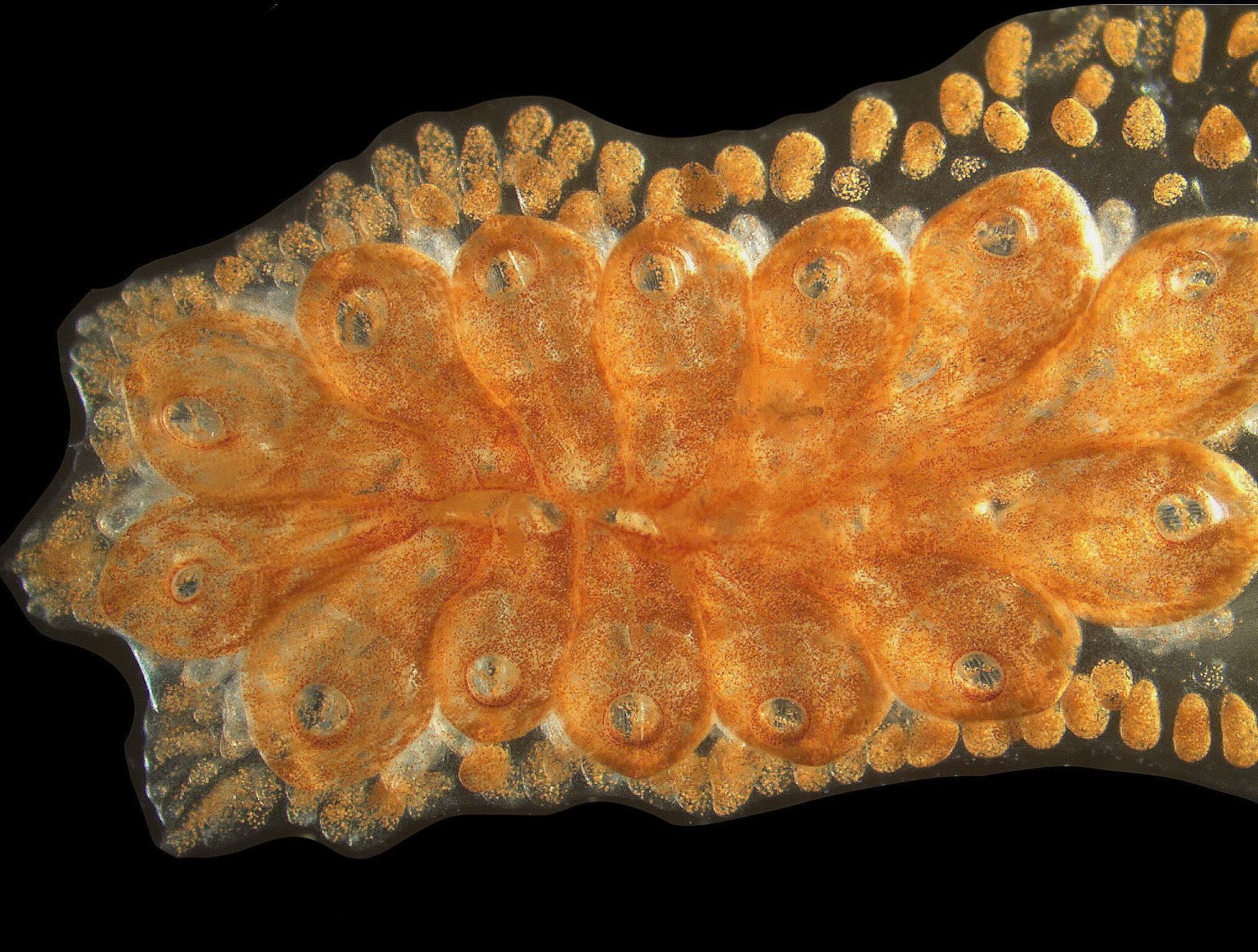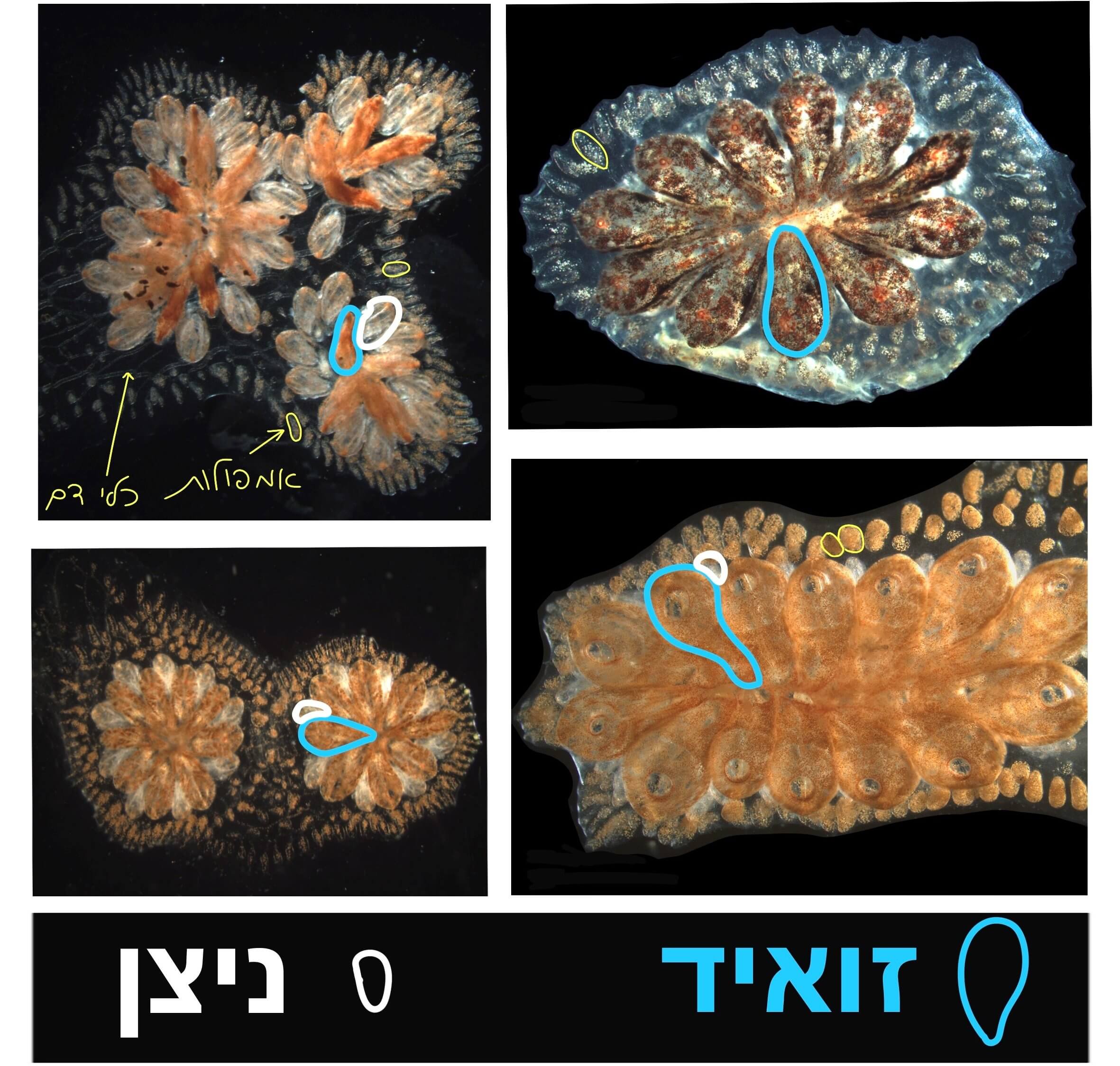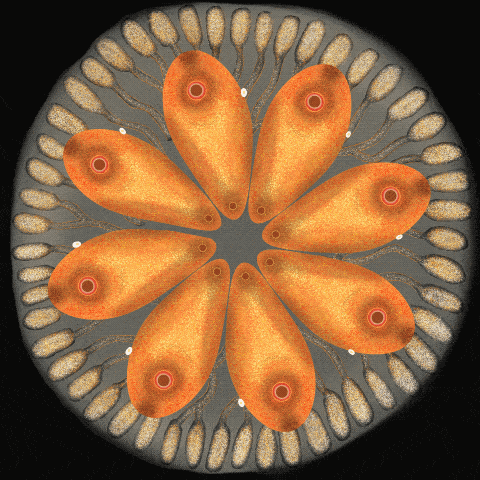The animal that breaks the laws of nature: a new Israeli study reveals that the colonies of the flower botryll, a unique marine creature, age in their entirety - and then return to being young again. The phenomenon earned the term "Orshina rhythm" - the Talmudic name of the mythological phoenix
By Racheli Vox, Angle - a news agency for science and the environment

During the flood, when Noah went around the ark and fed all the animals, one chicken sat on the side and did not come to him. Noah turned to him and asked him why he did not come to receive food from him, and the chicken replied that he did not want to disturb him during feeding. Noah was impressed by the noble behavior of the chicken, and blessed him that he would never die. This bird, the story of which appears in the Midrash and the Sanhedrin tractate, is the Orshina - the Talmudic designation of none other than the mythological phoenix.
Now, the Talmudic story resonates in reality, far from the pages of the book. A new Israeli study Reveals that the colonies of a unique marine creature called a floral botril age in their entirety, rejuvenate again - and God forbid, repeat, in an unusual circular process that has earned the term "Orshina's rhythm".
The floral butyryl (Botryllus schlosseri) is a marine animal, invertebrate and stationary, that lives in colonies whose total size is between half a centimeter and several centimeters, and which cling to surfaces - from rocks to ship bottoms. A boteril colony starts from one founder individual, which reproduces asexually: the new individuals, which are genetically identical to him, hatch from his body. The members of the colony are close to each other throughout their lives, and are connected to each other through a system of blood vessels. Each individual in the colony, including its founder, lives for three weeks: the young, called buds, hatch from the adult individuals, called zooids, and after two weeks become adults themselves. The zooids live for one week, and at the end of their lives they get smaller and smaller - and finally are absorbed while still alive into the colony and disappear.
It should be noted that each individual in the colony has a beating heart, and is able to eat and even reproduce by itself through sexual reproduction - the botryls are hermaphrodites, and are able to reproduce through the water as both males and females. However, an individual is unable to survive outside the colony. The size of a single individual is about one millimeter, and a colony can include tens of zoids - even hundreds and thousands.
The floral boteril is common almost all over the world: as mentioned, it is able to settle on the bottoms of ships - which made it easy for it to "catch a ride" on them and spread over the days. It lives mainly in shallow water - including in Israel, where the small animal is abundant (on rocks in the water, for example).
Around Botryl in 90 days

In the new study, recently published in the journal Scientific Reports, the researchers looked beyond the weekly cycle of life and death of the individual individuals - and discovered a cycle aging and the rejuvenation at the level of the entire colony, which was not known until now. "For 3 years, we followed 81 colonies, from the day they were born to the day they died - an average time of two and a half years - and analyzed findings we collected from them," says Dr. Osharat Ben-Hamo, who led the research as part of her doctoral thesis in the Department of Evolutionary and Environmental Biology at the University of Haifa and in the research Seas and Lakes for Israel, under the direction of Prof. Baruch (Buki) Rinkewitz for researching Seas and Lakes for Israel and Prof. Rachel (Akali) Ben-Shlomo from the Department of Biology and Environment at the University of Haifa - Oranim.
His father-in-law discovered that it is possible to divide the life days of each colony into 90-day segments. In each such segment, the entire colony grows (that is, the number of zoids in it increases) - and then shrinks again. Also, all zooids change their sex during this period, from males to hermaphrodites. And beyond that, the animal's vitality changes, from maximum to minimum: its entire form withers, its color changes to black, the edges of its blood vessels are twisted and all the indicators testify to the fact that it is in bad shape - in other words, the entire boteril colony is aging. 90 days later, the whole cycle begins again, and the colony grows again, changes its species again - and rejuvenates, like the phoenix.

Some colonies exist for one cycle of 90 days (and die after that), others live for two such cycles, three or more - but the lifespan of the colonies will always be some multiple of those 90 days. Occasionally, a colony may split into two separate colonies - and this process also occurs in sync with the segment boundaries.
As mentioned, his father-in-law chose to give the unique circle that she discovered the Jewish name "Orshina". "Most people don't know the story about the Ursina - and I really like to combine elements in science from philosophy And even relevant ideas from religion", she says. "You can create beautiful connections this way."
examine phenomena with a new eye
According to Ben-Hamo, beyond the wonder that boteril evokes, it also has another importance: as a model animal that does not experience pain and suffering. Today, many of the animals used in scientific research, such as mice and rats, are sentient (sensory) - that is, they are able to tolerate and feel pain and fear when experiments are conducted on them. However, according to Ben-Hamo, a lot of research evidence indicates that Boteryl is not sentient - first and foremost, due to the fact that there are no nerve receptors in his body that report the sensation of pain (nociceptors).
In addition to being mammals like us, with genetic sequences very similar to ours, "mice have become common in scientific research because of technical things: they are small, don't take up space, grow fast, reproduce quickly and a lot, and are easy to breed - and Botril meets all these requirements," says Ben -Him. "Beyond that, with the help of boteryl it is possible to examine phenomena with a new eye. This is a very unusual model animal, a creature that has escaped the way of nature and manages to rejuvenate itself - it is possible to discover new mechanisms through it, which we could never find with the help of mice." According to her, she is also investigating the possibility that Botryl would be suitable for use in cosmetic and clinical trials designed to develop products and medicines for humans.
"Either way, even when doing experiments on non-sentient animals, it is very important to preserve the dignity of the animals, out of respect for nature and the animal world," emphasizes Ben-Hamo. "This is a basic value for me."
Not another boring mammal
By the way, Ben-Hamo is not only a scientist - but also an artist, and science is her inspiration The illustrations and animations that she creates. "For me, art is a scientific tool: like the microscope, so is the brush," she says, and says that her paintings also appear in the scientific articles she publishes. "I illustrate different elements from the world of science - but Botryll serves as my muse. Beyond that, it is important to me that my works be very colorful and pleasing to the eye, to show how science is It is colorful and interesting".
Ben-Hamo will soon go on to do a post-doctorate in Italy, where boteril colonies are thriving. There, her romance with the unique animal could continue. "I was hooked on boteril from the first time I heard about it, I didn't understand how I did a full degree in animal science and never learned about the most interesting animal," she says. "When I started researching it, I realized that I had a treasure in my hand, the potential of which struck me. As biologists we look for the different, the unusual; And the boteril is no longer some kind of 'boring' mammal like us - it is a real alien", she concludes.
